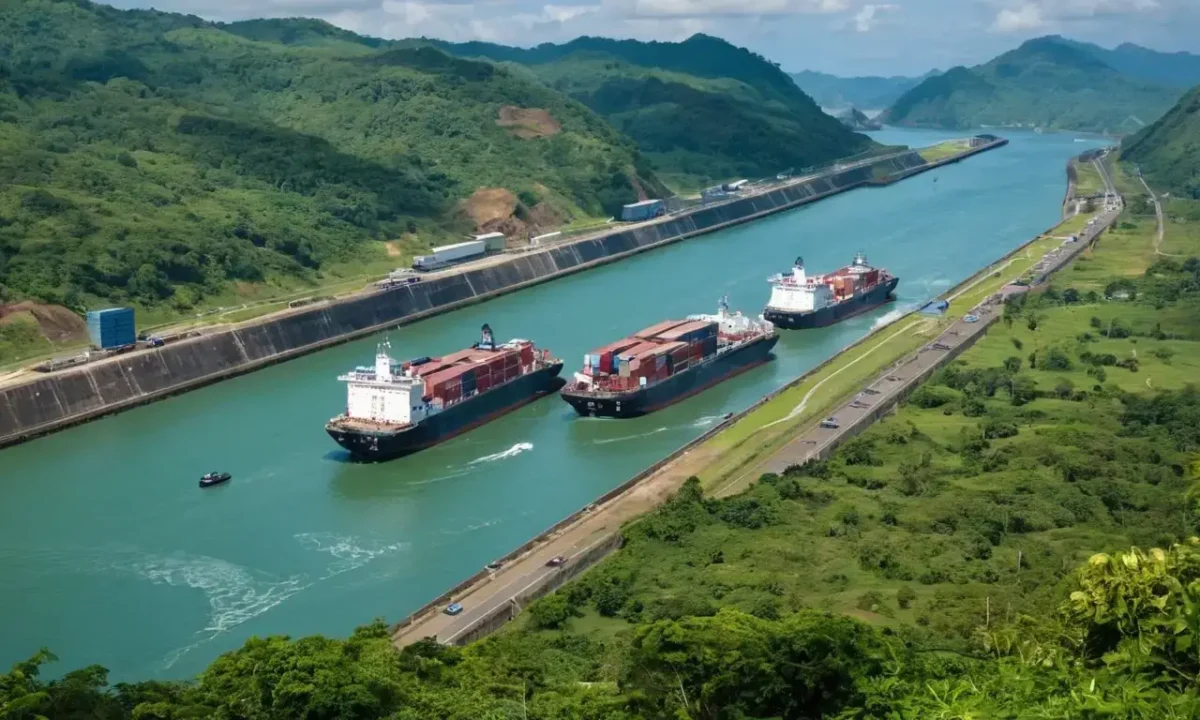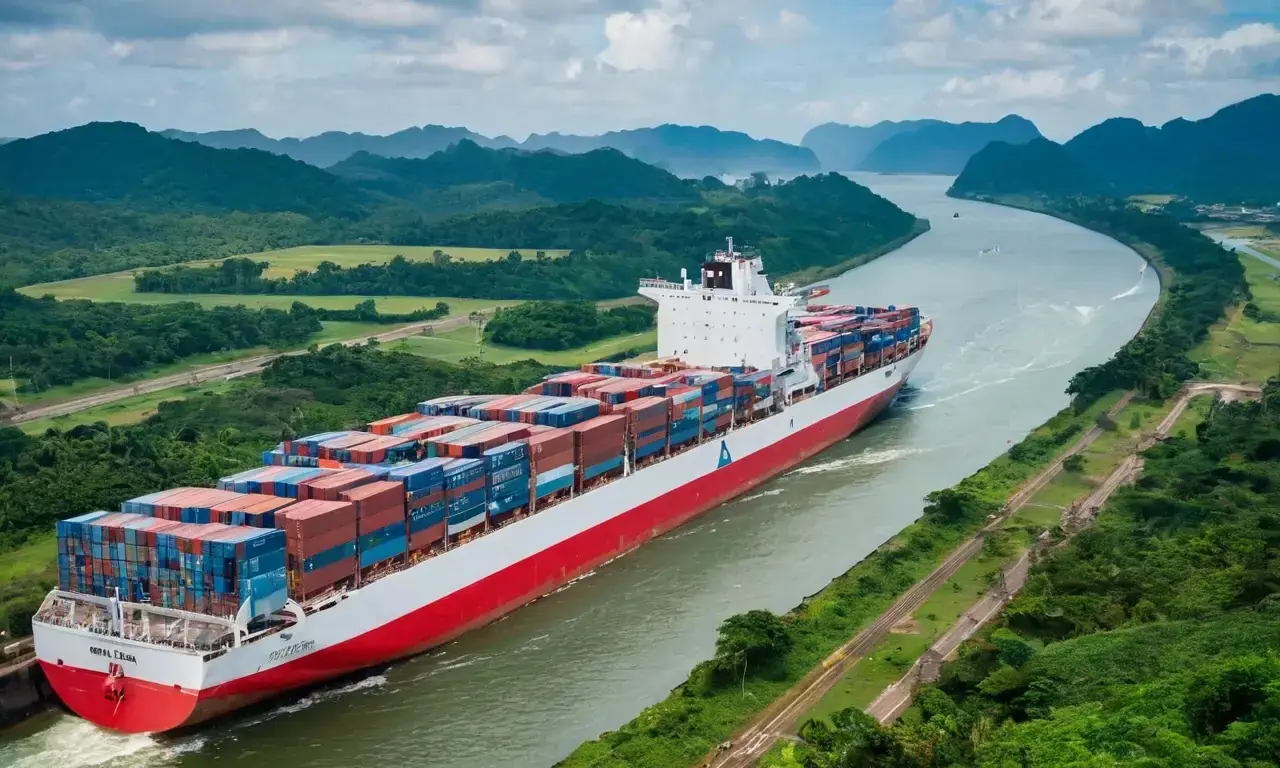
Panama Canal: Engineering Marvel Revolutionizing Trade

The Panama Canal is a testament to human ingenuity, serving as a vital artery for global trade since its opening in 1914. This engineering marvel connects the Atlantic and Pacific oceans, significantly reducing travel time for ships traversing vast distances. Its construction involved overcoming numerous challenges, including navigating treacherous terrain and adapting to diverse climates. The canal's impact on international commerce is undeniable, facilitating the movement of goods and fostering economic growth across continents.
This article delves into the intricate workings of the Panama Canal, exploring its historical significance, engineering feats, operational procedures, and future prospects. We will examine how it revolutionized global trade by shortening shipping routes and analyzing the challenges faced during construction. Additionally, we'll discuss the Gatun Dam's role in water management and explore the canal's impact on international relations. By understanding these aspects, we can appreciate the Panama Canal's enduring legacy as a symbol of human achievement and its continued contribution to global trade.
Engineering marvel of global trade
The Panama Canal is not just a waterway; it's a complex engineering system that requires precise coordination and meticulous maintenance. Its existence has profoundly impacted international trade by enabling ships to bypass the treacherous Cape Horn route, significantly reducing travel time and costs. Before its construction, navigating between the Atlantic and Pacific oceans required lengthy voyages around South America, adding weeks to shipping schedules.
The Panama Canal's significance lies in its ability to shorten these journeys, allowing goods to reach their destinations faster and more efficiently. This has had a profound impact on global trade, particularly for industries reliant on timely delivery of raw materials and finished products. The canal's construction also spurred economic growth in Panama, creating jobs and attracting investment.
The canal's success is largely attributed to its innovative engineering solutions. Building the canal required excavating vast amounts of earth, constructing locks to raise ships to different elevations, and managing water flow through a complex network of canals and dams. These challenges were met with ingenuity, employing techniques like dynamite blasting for excavation and cement-based construction methods for stability.
The Panama Canal's impact on global trade is undeniable. It has revolutionized shipping routes, shortened travel times, and facilitated the movement of goods across continents. This has had a profound impact on international relations, fostering economic cooperation and contributing to global interconnectedness.
Construction challenges and solutions
Building the Panama Canal was no easy feat; it involved overcoming numerous obstacles that threatened its success. The terrain presented significant challenges, with steep slopes, dense jungles, and unpredictable weather conditions. Additionally, the canal's location in a tropical climate posed additional hurdles for construction workers and equipment.
One of the most significant challenges was navigating the mountainous terrain of Panama. Excavating the canal required extensive earthmoving operations, which were further complicated by landslides triggered by heavy rainfall. To address these issues, engineers employed innovative techniques like dynamite blasting to clear obstacles and stabilize slopes. They also developed specialized machinery for excavation and transportation, adapting their methods based on the specific challenges encountered.
Another crucial aspect of construction was managing water flow within the canal system. The Gatun Dam, a massive hydroelectric dam built upstream, plays a vital role in regulating water levels. This dam controls the flow of the Chagres River, which feeds into the Panama Canal's network. By controlling water levels, the dam ensures adequate water supply for ship navigation and maintains the canal's operational efficiency.
The construction process also involved overcoming logistical challenges. The remote location of the project posed difficulties in transporting materials and equipment. To address these issues, engineers developed innovative solutions like building temporary roads and using barges to transport supplies across the canal. These efforts ensured that construction proceeded smoothly despite the challenging environment.
Gatun Dam and water management
The Gatun Dam is a cornerstone of the Panama Canal's operation, playing a crucial role in regulating water flow and maintaining the canal's functionality. This massive hydroelectric dam, built on the Chagres River, serves as a vital source of power for the canal system.
The Gatun Dam's primary function is to regulate water levels within the canal network. By controlling the flow of the Chagres River, the dam ensures that ships can navigate through the locks at optimal elevations. The dam also helps maintain the canal's water balance, preventing excessive evaporation and ensuring a consistent supply for ship operations.
The Gatun Dam's construction involved extensive engineering feats. It required diverting the Chagres River to create Lake Gatun, which serves as a reservoir for the canal system. This lake plays a crucial role in regulating water levels and maintaining the canal's operational efficiency. The dam also generates hydroelectric power, providing a sustainable source of energy for Panama.
The Gatun Dam is not only an engineering marvel but also a symbol of Panama's commitment to sustainable development. Its construction has had a lasting impact on the country's economy and environment, contributing to its growth as a regional hub for trade and tourism.
Historical milestones and expansions

The history of the Panama Canal is marked by significant milestones that reflect both technological advancements and international relations. The canal's initial construction was a testament to human ingenuity and perseverance, overcoming numerous challenges along the way.
One of the most notable historical events was the signing of the Hay-Bunau-Varilla Treaty in 1903, which granted the United States control over the Panama Canal Zone. This treaty marked a turning point in the canal's development, as it paved the way for extensive construction and expansion efforts. The US invested heavily in developing the canal, employing innovative engineering techniques and adapting their methods based on the unique challenges of the region.
The early years of the canal saw significant progress in its construction. However, the project faced numerous setbacks due to factors like landslides, disease outbreaks among workers, and political tensions between Panama and the United States. Despite these challenges, the canal continued to evolve, with engineers constantly seeking innovative solutions to overcome obstacles.
In 1977, Panama gained full control of the canal after a long negotiation process. This transfer marked a significant milestone in the history of the canal, signifying a return of sovereignty for Panama and a new era of cooperation between the two nations. The handover also allowed Panama to invest in its infrastructure and prioritize its own development goals.
Panama Canal's impact on shipping
The Panama Canal has had a profound impact on global shipping, revolutionizing international trade by shortening travel times and reducing costs. Before the canal's construction, ships had to navigate around South America, adding weeks to their journeys. This significantly impacted shipping schedules and increased transportation costs for businesses worldwide.
The canal's opening in 1914 marked a turning point in global trade. Ships could now traverse directly between the Atlantic and Pacific oceans, drastically reducing travel time and improving efficiency. This led to a surge in international trade, as goods could be transported more quickly and cost-effectively. The Panama Canal also facilitated the growth of new industries and economic sectors, particularly those related to shipping and logistics.
The canal's impact on shipping has been further enhanced by its continuous expansion efforts. As ship sizes have grown larger, the canal has undergone several expansions to accommodate these vessels. These upgrades ensure that the canal remains a viable route for modern-day cargo ships, facilitating global trade in an ever-evolving world of commerce.
Transfer of control and future prospects
The transfer of control of the Panama Canal from the United States to Panama in 1977 marked a significant milestone in international relations. This event signified a return of sovereignty for Panama and a new era of cooperation between the two nations.
The handover of the canal was a testament to Panama's commitment to self-determination and its desire to control its own destiny. It also allowed Panama to invest in its infrastructure and prioritize its own development goals, contributing to its growth as a regional hub for trade and tourism. The transfer also strengthened Panamanian independence and solidified its role on the global stage.
Looking ahead, the future of the Panama Canal remains bright. As global trade continues to evolve, the canal is expected to remain a vital link in the international shipping network. Ongoing efforts to improve infrastructure and adapt to changing shipping demands will ensure that the canal continues to play a crucial role in connecting continents and facilitating global commerce for years to come.
Leave a Reply





Related Links